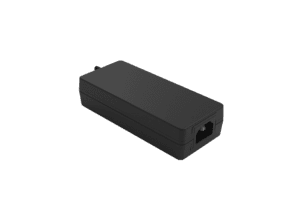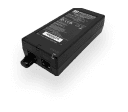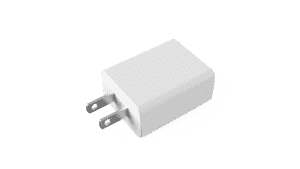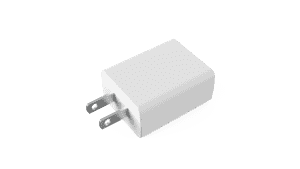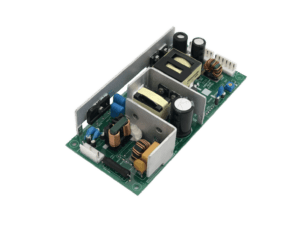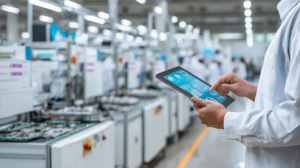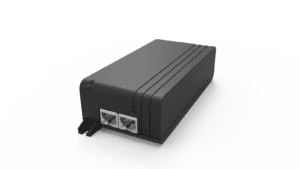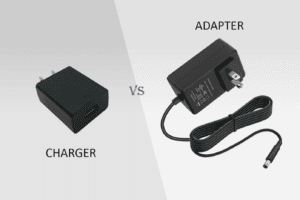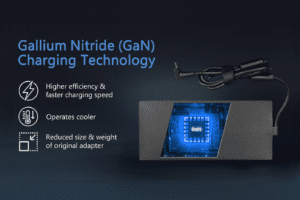BLOG
How 5G and Edge Connectivity Are Transforming Smart Docking for Industrial Robots in Real-Time Environments
QUICK LINKS

As industrial robots take on more autonomous and collaborative roles in factories, warehouses, and logistics hubs, the need for real-time communication and low-latency charging infrastructure has become critical. No longer limited to repetitive offline tasks, today’s mobile and stationary robots rely on intelligent docking systems that manage not just power, but data exchange, predictive maintenance, and coordination across the facility.
The convergence of 5G and edge computing is now supercharging this ecosystem—bringing ultra-low latency, high bandwidth, and localized processing to the charging dock itself. The result? Charging stations that are no longer just endpoints but fully integrated edge nodes in smart industrial environments.
In this article, we’ll explore how 5G and edge connectivity are transforming smart docking stations into intelligent infrastructure—and what this means for industrial robot OEMs, systems integrators, and facility operators.
Why Industrial Robots Need Real-Time Docking Intelligence
As industrial robots evolve into fully autonomous agents, their charging stations must support real-time communication, fleet coordination, and localized control.
Top Features
- Millisecond-level communication with facility networks
- Real-time BMS data exchange via 5G or local edge gateways
- Integration with MES/WMS systems to schedule charging during task handovers
- Predictive analytics to monitor battery health, load cycles, and dock utilization
Top Benefits
- Reduces downtime by enabling just-in-time charging
- Increases efficiency by syncing charging with workflow automation
- Enables fault detection and recovery without cloud dependency
- Supports faster reallocation of robots in high-traffic industrial zones
Best Practices
- Connect charging docks to on-site edge servers for local fail-safe operation
- Design firmware for sub-10ms response time between robot and dock
- Align BMS data logs with production KPIs and maintenance workflows
- Test latency across all critical control loops before full deployment
Docking is no longer passive—it must be a real-time, decision-making node in your smart factory.
The Role of 5G in Smart Docking Infrastructure
5G provides the speed and bandwidth needed for high-density robot fleets, enabling real-time status updates, video feeds, and networked power management at the dock level.
Top Features
- Ultra-reliable low-latency communication (URLLC)
- Massive machine-type communication (mMTC) for hundreds of robots
- Network slicing for priority-based traffic segregation (charging vs. control)
- Seamless handoff between docks and facility routers
Top Benefits
- Allows robots to coordinate charging requests based on availability and load
- Enables video-based alignment systems using low-latency feeds
- Improves fault response time by reducing cloud dependency
- Supports multiple communication channels for charging, diagnostics, and alerts
Best Practices
- Use 5G routers or modules embedded directly in charging stations
- Create dedicated facility network slices for robotic infrastructure
- Enable automatic handoff to LTE or Wi-Fi if 5G coverage lapses
- Validate 5G backhaul performance under full fleet load
5G makes every dock a communication hub, not just a charger.
How Edge Computing Enhances Localized Control and Resilience
Edge computing brings processing power directly to the charging dock—reducing latency, increasing system resilience, and offloading cloud dependency for mission-critical operations.
Top Features
- On-dock microcontrollers or edge gateways for localized decision-making
- Autonomous charging orchestration when cloud or network access is lost
- Battery trend analysis and load prediction at the edge
- Offline data caching for maintenance logs and safety compliance
Top Benefits
- Enables predictive maintenance without constant cloud access
- Allows real-time charging orchestration even during network outages
- Reduces data latency for AI models trained on localized fleet behavior
- Supports smart factory protocols (OPC UA, MQTT, Modbus) for integration
Best Practices
- Deploy edge nodes with dual-core processors and industrial memory
- Ensure firmware updates can be pushed both locally and remotely
- Validate dock logic under offline, degraded, and full-fleet conditions
- Integrate dock telemetry with plant-level edge AI for continuous optimization
With edge, your charging station becomes a resilient part of the facility’s automation mesh.
CLIENT'S QUOTE
"Phihong’s PoE solutions have made a huge difference for us! Our network runs more efficiently, and we’ve seen real cost savings. We couldn’t be happier!"
Use Cases: 5G + Edge-Powered Smart Docks in Action
From warehouses to chemical plants, next-gen smart docks are already delivering real-time performance through 5G and edge processing.
Top Features
- Automated material handling bots queuing for charge based on task urgency
- Vision-assisted docking using low-latency edge video feeds
- Facility-wide charge management using AI-powered energy load balancing
- On-dock predictive alerts for battery wear, overheating, or connector faults
Top Benefits
- Improves uptime by routing robots to alternative docks in real time
- Reduces energy costs with dynamic, grid-aware charging
- Enhances fleet coordination during multi-shift or 24/7 operations
- Increases safety with proactive fault prevention at the local node
Best Practices
- Tag each dock with a unique IP address for real-time monitoring
- Feed edge data into AI platforms for global fleet optimization
- Use thermal and electrical monitoring sensors for on-dock analytics
- Align smart dock deployment with existing 5G infrastructure planning
This isn’t the future—it’s happening now in next-gen smart manufacturing environments.
Compliance, Security, and Infrastructure Considerations
With increased connectivity comes the need for robust security, compliance, and IT alignment across the facility.
Top Features
- TLS encryption for all 5G and edge communications
- Secure boot and firmware integrity checks on dock controllers
- Compatibility with IT/OT security policies for industrial networks
- Support for UL, CE, and FCC certifications for connected equipment
Top Benefits
- Protects against malware and cyber threats to fleet infrastructure
- Ensures legal and insurance compliance in regulated industries
- Enables safe updates and diagnostics in live production environments
- Simplifies integration into existing cybersecurity frameworks
Best Practices
- Use VPN tunnels or private 5G networks for mission-critical zones
- Assign role-based access controls to dock configuration software
- Schedule routine firmware audits and OTA patch deployments
- Maintain digital twins of docks for remote inspection and simulation
Security is no longer optional—smart docks must be as secure as they are connected.
How Phihong USA Supports 5G + Edge-Enabled Smart Docking
Phihong USA delivers next-generation robotic charging systems ready for 5G and edge integration. Whether you’re deploying mobile AMRs, industrial floor bots, or autonomous logistics robots, we provide:
- Smart AC-DC and DC-DC power modules with CANBus and RS-485
- IP67/IP68-rated enclosures built for industrial and outdoor environments
- Edge-ready docking platforms with on-board diagnostics and predictive maintenance tools
- Engineering support for 5G router integration, safety compliance, and real-time firmware orchestration
With Phihong, your charging stations do more than charge—they think, connect, and scale with your factory’s digital future.

Contact Our Team Today!
Our dedicated sales team and international partners are prepared to support you with your latest projects and initiatives globally.
Explore More with Phihong USA
As we conclude our exploration of PoE technology, it’s evident how these innovations are streamlining power and data integration across various industries. Phihong USA stands at the forefront of this technological advancement, offering a diverse range of power solutions designed to meet the evolving needs of modern industries.
Phihong USA’s extensive product lineup includes:
- Power over Ethernet (PoE) Solutions: Delivering reliable power and data transmission over a single cable, ideal for simplifying network installations and reducing costs.
- AC/DC Adapters and Power Supplies: From compact adapters to industrial-grade power supplies, Phihong provides solutions that ensure efficiency and reliability in various applications.
- Battery Chargers: Customizable chargers for lithium-ion and lead-acid batteries, supporting a wide range of power requirements for mobility and industrial applications.
- Medical Power Supplies: Specialized power solutions designed to meet the stringent requirements of the healthcare industry, ensuring safety and reliability.
Phihong USA is committed to innovation and excellence, continually developing products that meet the highest standards of performance and reliability. Their global reach and dedication to customer support make them a trusted partner in powering the future.
Here are some useful links to explore Phihong USA’s offerings further and bring in new potential clients:
Visit Phihong USA to discover how their advanced power solutions can support your business needs. Whether you’re looking to upgrade your network, or find reliable power supplies, Phihong USA has you covered.
By choosing Phihong USA, you’re partnering with a leader in power technology, ensuring your operations run smoothly and efficiently with top-tier power solutions. Contact Us today!
FAQ
What role does 5G play in robotic charging infrastructure?
5G enables ultra-low latency and high-bandwidth communication, allowing robots and docks to coordinate in real time. With 5G, charging stations can receive status updates, diagnostics, and charging requests in milliseconds. It also supports fleet-wide orchestration, video-based docking, and dynamic energy scheduling. In high-density deployments, 5G ensures that every dock and robot stay in sync without bottlenecks or delays.
How does edge computing improve smart docking?
Edge computing brings local processing power to the charging dock, enabling it to operate independently of the cloud. This allows for real-time diagnostics, predictive maintenance, and autonomous decision-making—such as rerouting robots or throttling charge current—even during network interruptions. Edge-enabled docks also reduce cloud data loads and improve privacy, particularly in regulated industries.
Can 5G and edge work together in industrial robot charging?
Yes. The combination of 5G for real-time communication and edge computing for local logic is ideal for industrial environments. 5G enables fast data transfer between robot, dock, and fleet manager, while edge computing ensures local resilience and fail-safe behavior. Together, they allow for fully autonomous charging orchestration, fault detection, and workload balancing at scale.
What challenges come with implementing 5G/edge in charging docks?
Challenges include network security, infrastructure cost, and firmware complexity. Manufacturers must ensure docks are designed for encrypted communication, can operate under various latency conditions, and comply with IT/OT standards. Power and thermal constraints must also be managed when adding processors or 5G modules. It’s crucial to work with vendors that understand both hardware and software integration across connected systems.
How does Phihong support smart dock development for real-time environments?
Phihong USA offers smart charging platforms with integrated power modules, communication ports (CAN, UART, Ethernet), and edge-ready diagnostics. We work with OEMs to embed 5G-ready communication interfaces, design UL-compliant systems, and implement predictive maintenance tools. From rugged enclosures to firmware synchronization, Phihong builds docking infrastructure that supports real-time robotic operations in the most demanding environments.

